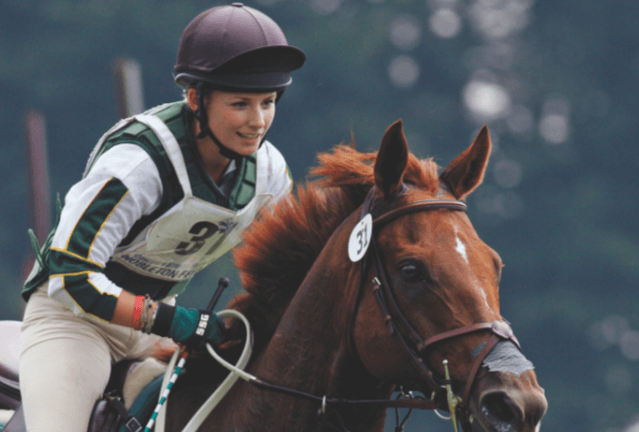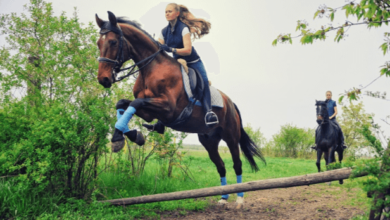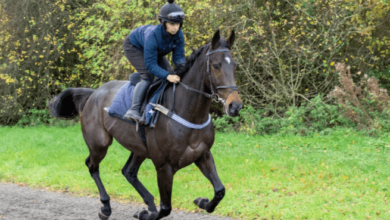How can a team train for a team penning event?

Team penning is an exciting, fast-paced equestrian sport that demands coordination, teamwork, and precise communication between riders and their horses. In a typical team penning event, a group of three riders works together to separate specific cattle from a herd and guide them into a designated pen within a set time limit. While it may look like a fun and spontaneous event to the untrained eye, succeeding in team penning requires a well-organized training regimen, a solid understanding of cattle behavior, and strategic planning. So, how can a team train effectively for a team penning event? This comprehensive guide will cover every aspect of preparation, from choosing the right horses to developing teamwork, strategies, and refining communication skills.
Understanding the Basics of Team Penning
Before delving into the training specifics, it’s essential to understand the core objectives of team penning. The goal is to isolate three specifically numbered cattle from a herd of 30 and drive them into a pen at the opposite end of the arena. The team must work quickly and efficiently, avoiding mistakes such as letting the wrong cattle cross the halfway line. The sport requires riders to think on their feet, communicate without hesitation, and guide their horses with finesse and control.
1. Selecting the Right Horses for Team Penning
The success of any team penning effort begins with choosing the right horses. Horses used in penning must be agile, intelligent, and responsive to commands. They should have strong “cow sense,” which is the ability to read cattle movements and react quickly. Some key factors to consider include:
- Agility and Speed: Horses need to be quick on their feet to chase cattle while making sharp turns.
- Cow Sense: A horse with strong instincts will naturally anticipate the movements of cattle, which is crucial in separating them from the herd.
- Calm Demeanor: A horse that can stay composed under pressure is invaluable in fast-paced events where quick decisions are necessary.
- Trust and Responsiveness: A deep connection between rider and horse is essential. The horse should be highly attuned to cues and able to react immediately without hesitation.
Training a horse for team penning should begin with exercises that build these qualities. Drills focusing on short bursts of speed, sharp turns, and stopping quickly are essential for developing agility and control. Practicing around cattle also helps build a horse’s confidence and ability to predict cattle behavior.
2. Building Rider Skills and Fitness
Though team penning is primarily a team sport, individual rider skills are the backbone of a successful performance. A team is only as strong as its weakest rider, so each member must train to improve their horsemanship, fitness, and mental acuity. Key areas of focus include:
- Riding Proficiency: Riders need to be comfortable controlling their horses with minimal rein use, relying on leg and body signals for seamless communication. This is crucial for maintaining speed and fluidity during the event.
- Positioning and Timing: Riders must learn to position themselves in relation to both the cattle and their teammates, ensuring they are in the right place to help control the herd.
- Stamina: Penning can be physically demanding, so improving core strength, balance, and endurance will help riders remain effective throughout the event.
- Split-Second Decision Making: The ability to make quick decisions based on cattle movement and herd dynamics is key. Riders should practice staying calm under pressure while analyzing situations quickly.
Cross-training with other equestrian disciplines like reining or cutting can help improve rider skills in precision and control. Drills that emphasize quick starts, stops, and directional changes on horseback are excellent for fine-tuning these abilities.
3. Communication and Team Coordination
Successful team penning hinges on the seamless coordination between all three team members. Unlike many sports, there’s little time for verbal communication once the cattle are in motion, so developing non-verbal signals and building a cohesive team strategy are essential. Here’s how teams can improve their communication and coordination:
- Developing Roles: Typically, one rider focuses on cutting the chosen cattle from the herd, while the other two work to push them into the pen. Each rider should practice their role extensively to ensure they are fully prepared for their specific task.
- Clear Signals: Teams should establish a system of hand signals or other subtle cues to communicate during the event. Horses are sensitive to tension and movement, so having predetermined signals can keep everyone on the same page without spooking the cattle.
- Reading Cattle Behavior Together: Each member of the team needs to be able to anticipate how cattle will move as a unit. Practicing with herds can help riders learn how cattle are likely to respond when separated and give them time to react as a team.
Team practice sessions should focus on synchronizing movements and developing an unspoken connection between the riders. Working in a training pen where the team can practice cutting cattle and driving them into a pen together is vital to building coordination.
4. Cattle Behavior and Herd Dynamics
To be successful in team penning, understanding cattle behavior is paramount. Cattle are herd animals, and their natural tendency is to stay together for safety. When a group of riders attempts to cut specific cattle from the herd, the natural response of the animals is to try and rejoin the herd. Here’s what teams should focus on:
- Cattle Movement: Cattle often move in a “bubble” of personal space. Riders should understand how to manipulate this bubble without spooking the entire herd. It’s also crucial to know how cattle react to pressure, as overzealous pushing can cause them to bolt.
- Herding Instincts: Cattle naturally follow a leader, so identifying the most dominant cow in the herd can help riders predict movement patterns and isolate the cattle more efficiently.
- Anticipation: Teams should practice reading the body language of cattle. Subtle cues like head positioning or shifts in weight can give insights into which direction a cow is likely to move.
It’s helpful to work with different types of cattle during training to experience how various breeds and temperaments react. This will prepare the team for the variety they may encounter during a competition.
5. Practicing in a Simulated Competition Setting
Once the basics of horse training, rider fitness, and team communication have been mastered, it’s time to practice under conditions similar to an actual competition. This can help build confidence and reduce any potential surprises on event day. Teams should replicate the exact competition setup, including:
- Time Limits: Teams typically have 60-90 seconds to complete the event. Practicing under time constraints can help build the pressure and urgency needed to simulate real competition conditions.
- Random Cattle Numbers: In a real event, teams are assigned specific cattle numbers to pen. Practice with a random draw of numbers to mimic this experience.
- Arena Setup: Train in a similar-sized arena with a working pen to replicate the actual layout and spatial limitations. This helps teams develop spatial awareness and get a feel for how far or fast they need to move during competition.
Conducting practice runs in full competition dress (gear, tack, and uniforms) can also prepare riders and horses for the real event atmosphere, minimizing distractions and anxiety.
6. Mental Preparation and Strategy Development
In addition to the physical and technical aspects of training, mental preparation is just as critical. Confidence, focus, and a clear strategy can significantly affect the outcome of a team penning event. Some essential strategies include:
- Visualization: Riders should visualize successful runs before competitions. This mental rehearsal helps sharpen focus and increase familiarity with the process.
- Pre-Event Strategy Meetings: Before entering the arena, teams should review their plan, including who will take the lead on cutting and how the other riders will assist. Discuss possible scenarios (such as unruly cattle) and establish contingency plans.
- Staying Calm Under Pressure: Remaining calm and composed is vital. High-pressure environments can lead to rushed decisions or miscommunication. Riders should practice maintaining focus, even when things aren’t going according to plan.
Many successful teams use mental conditioning techniques like deep breathing exercises or meditation to stay calm and centered before and during the event.
7. Regular Review and Adjustment of Training
Continuous improvement is the key to long-term success in team penning. After every practice or competition, teams should conduct a review to identify what went well and what can be improved. This feedback loop ensures that mistakes are corrected and strengths are reinforced. Consider the following steps for post-event reflection:
- Video Analysis: Recording practice sessions or competitions can help riders identify mistakes or areas of improvement. Watching the footage allows teams to break down their performance in slow motion and make adjustments.
- Feedback from Experienced Riders or Coaches: Having an external perspective, such as feedback from an experienced rider or coach, can be invaluable. They can provide insights into finer technical details that may go unnoticed by the team.
- Consistent Practice: Like any sport, consistency in practice is essential. Teams should set up a regular training schedule to maintain momentum and continuously sharpen their skills.
As the team progresses, they should increase the difficulty of their training by adding new challenges, such as working with faster or more unpredictable cattle.
Conclusion: The Path to Success in Team Penning
Training for a team penning event requires a holistic approach, combining horse training, rider fitness, team coordination, and mental preparedness. By focusing on selecting the right horses, building individual and team skills, understanding cattle behavior, and practicing in a realistic setting, teams can maximize their chances of success. The best teams are those who train with consistency, refine their communication, and continuously strive for improvement.




